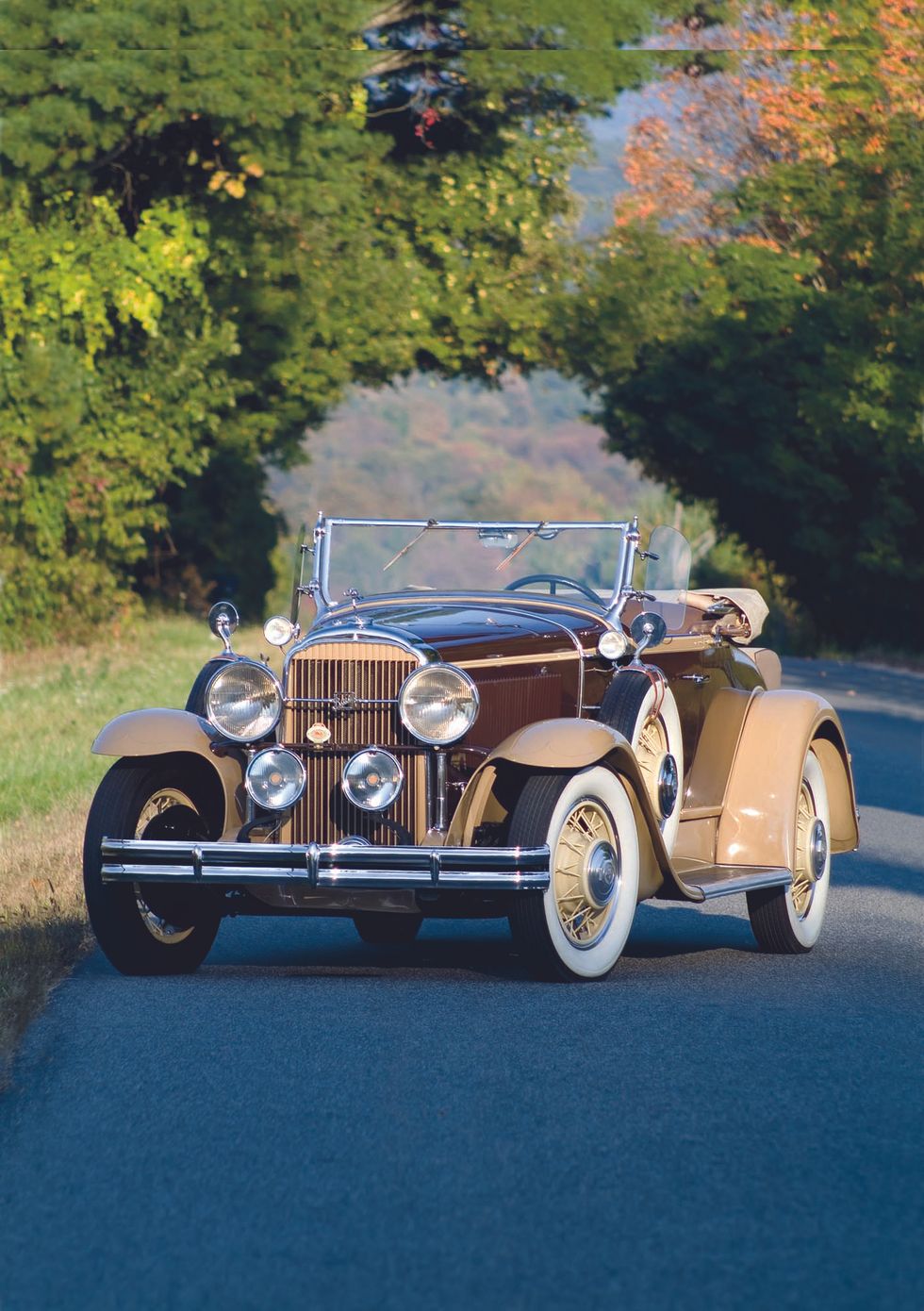
THE 1931 BUICK SERIES 60 WAS THE FIRST OF THE BUICK EIGHTS
Studebaker had one. So did Nash, Auburn, De Soto, and Dodge. In fact, more than 20 automakers were offering an eight-cylinder in a mid-priced car by 1930. Buick wasn't among them, but it was about to catch up in a big way.
For 1931, Buick raised the curtain on a lineup featuring no fewer than three different straight-eight engines, including the 220.7-cu.in. for the new entry-level Series 50, the 272.6-cu.in. for the Series 60 seen here, and the 344.8-cu.in. for the new senior Series 80 and Series 90. By design, these engines shared three characteristics: They were no longer than the straight-sixes they replaced, they shared no parts, and they incorporated overhead valves—a Buick hallmark since its launch in 1903—giving them an edge over the more common flatheads.
Photo: David Traver Adolphus
Buick's move was a reaction to market pressure. By 1929, buyers had begun to expect eight-cylinder power in a moderately priced car, especially after Chevrolet introduced its “stovebolt” six. Buick was facing skidding sales, too, despite 1929 being a banner year for the auto industry. The task of designing the new engines was given to John Dolza, who had previously conducted an analytical report on some of the best eight-cylinder engines then in production.
Conservative management wanted the new eights to be no longer than the sixes they would replace, giving them the option of reversing course if things went south. This constrained the new designs more than they might have expected. Dolza and his team had to use crankshaft bearings that were narrower than ideal, which resulted in bearing failures when the oil became too hot. The remedy was an "oil temperature regulator," which could both cool hot oil and warm cold oil. No other U.S. automaker used one.
Photo: David Traver Adolphus
The engines weren't all that was new for 1931. Buick abandoned its multi-disc clutch setup, using a single dry disc on the lower series (50 and 60) and two discs on the senior series (80 and 90). It sent power to a three-speed synchromesh transmission designed and built by Buick. The chassis was redesigned for 1931, and the brakes, though still operated by cables, were improved. Thermostatically controlled radiator shutters, normally a feature of more expensive cars, were incorporated as part of the effort to control oil temperatures. The Series 50 was new to the lineup, replacing the one-year-only Marquette, while the Series 80 and 90 took the Series 60’s place at the top of the line.
For all this change, Buick kept its cars’ external appearance virtually the same. Even Buick fans have a hard time telling a 1931 eight from a ’30 six; the easiest way, aside from lifting the hood, is to look for the numeral 8 on the radiator cap. There were no fewer than 24 models offered, including the Series 60 two-door sport roadster seen here, known in factory parlance as an 8-64. Just 1,050 of these were built, making it one of the rarer models; the most popular of the Series 60s that year was the five-passenger sedan, with 30,665 produced.
Photo: David Traver Adolphus
The new eights didn't result in a sales rebound for Buick, but then again, the entire industry was having a bad year in 1931, as the Great Depression deepened. Production totaled 138,965 for the extended July 1930-January 1932 run, a dip of 24 percent from the 1930 model year. Critics tied Buick's troubles to two mistakes made in the late 1920s: the styling of the 1929 models, with their slight bulge along the beltline, and the introduction of the Marquette, which lacked overhead valves and torque-tube drive, both of which were expected Buick virtues.
If you're considering putting one of these handsome, solidly built straight-eights in your garage, you shouldn't have a hard time tracking one down. Over the past three years, 20 have been offered for sale at hemmings.com, with asking prices of $9,800 to $89,500. We found five listed for sale as of this writing, including the Series 60 sport roadster pictured above, which was advertised for $64,999. Closed cars can be a bargain; a Series 60 sedan sold for $20,900 at auction in January 2023.
Specifications
Engine
- OHV straight-eight, 272.6-cu.in., two-barrel Marvel updraft carburetor
- 90 hp at 3,000 rpm
- 200 lb-ft at 1,600 rpm
- Three-speed manual with synchromesh
Suspension
- Solid axle, semi-elliptical longitudinal springs, double-acting Lovejoy hydraulic shocks
Brakes
- Four-wheel mechanical drums
- 118 inches
- 3,465 pounds
- $1,335 ($26,965 in 2023 dollars)
- $28,100